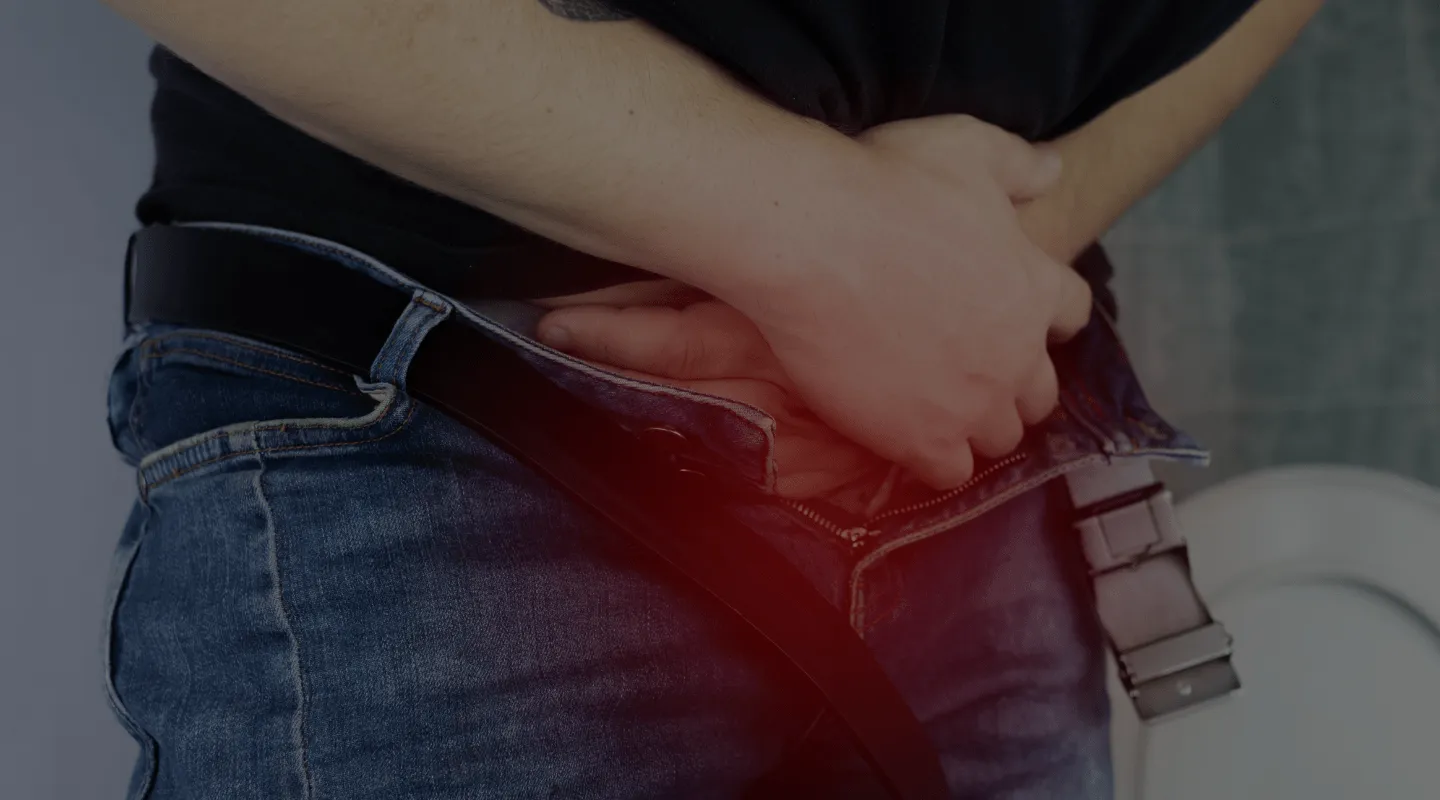
Prostatectomy
Your Prostatectomy in Tunisia at an Affordable Price
Benefit from quality surgical treatment. Our teams welcome you in a reassuring environment, with proven techniques and attentive support.
How does it work?
What is a Prostatectomy?
A prostatectomy is a surgical procedure that involves removing the prostate gland along with the surrounding tissues. This procedure usually involves the removal of the seminal vesicles and some nearby lymph nodes. When limited to the prostate, a radical prostatectomy can cure prostate cancer in men.
What is the cost of a prostatectomy in Tunisia?
If you are considering a prostatectomy in Tunisia, it is important to know that the price may vary depending on the surgical technique chosen and the extent of the operation (such as lymph node removal). However, it is certain that the cost of a prostatectomy in Tunisia will remain much more affordable than in a Western country. To receive a free, personalized quote, please click on the link below.
What you need to know before you start
Men under 75 years of age, suffering from limited prostate cancer and having a life expectancy of 10 years, are those who benefit most from a radical prostatectomy. Before performing this surgical procedure, doctors seek to determine if the cancer has not already exceeded the limits of the prostate. To do this, they rely on tables comparing biopsy results and PSA levels to assess the risk of spread. To better assess the situation, other examinations such as CT scans, bone scans, MRIs, and ultrasounds may be considered if necessary. If the prostate cancer has not yet reached other parts of the body, the urologist may suggest alternatives to the surgical procedure, such as radiotherapy, hormone therapy, or even close monitoring over time, as the growth of most prostate cancers is very slow. If the risk of cancer spreading is high, it is also possible to consider pelvic lymph node dissection.
How is a prostatectomy performed?
When it comes to prostatectomy in Tunisia, there are a variety of surgical techniques available. Here are the main ones:
- For a classic prostatectomy, the surgeon makes an incision of approximately 20 to 25 cm below the navel. This vertical incision allows for radical prostatectomy and, in less frequent cases, an incision at the perineum, the space between the scrotum and the anus;
- Laparoscopic prostatectomy: Using the laparoscopic prostatectomy technique, surgeons make small incisions in the abdomen to access the target area. Using surgical instruments and a camera, they perform the operation from outside the body. A video screen allows the surgeon to monitor the progress of the procedure in real time;
- Robot-assisted laparoscopic prostatectomy: Using robot-assisted prostatectomy, the surgeon no longer needs to use his own hands to perform the operation. Instead, he controls a robot remotely from a console located in the operating room. Thanks to a computerized system, the surgeon’s hand movements are instantly transmitted to the robot’s arms, equipped with sophisticated surgical instruments. This technique, called robotic radical prostatectomy, is performed under general anesthesia. During the procedure, the patient lies on his back to facilitate access to the robot. Using this innovative method, the surgeon can offer his patient a more precise and less invasive prostate operation. Once an incision is made near the navel, carbon dioxide is introduced inside the abdominal cavity to ensure an adequate working space. Cannulas are then placed to facilitate the introduction of the robotic instruments into the abdomen. The operation, which can vary from 3 to 4 hours depending on the type of procedure, involves the complete removal of the prostate and seminal vesicles;
The process of removing the pelvic lymph nodes is performed simultaneously on both sides according to clinical needs. Once this is done, the bladder is reconnected to the urethra to restore normal urinary tract function. The patient then leaves the operating room with a urinary catheter and drainage, which will be removed after a few days of recovery.
The use of a robot to perform a radical prostatectomy offers all the benefits of minimally invasive surgery:
- Reduced bleeding;
- Better cosmetic results;
- Post-operative benefits include reduced pain, shorter hospital stay, and faster return to normal daily activities.
Compared to conventional laparoscopic surgery, robotic surgery offers an improved three-dimensional perspective, with a stable image that allows delicate and complex manipulations to be performed reliably. It also offers better protection of the structures surrounding the prostate, such as the urethral sphincter which is crucial for continence and the neurovascular bundles. This improvement translates into more effective functional results for a rapid recovery of urinary continence and sexual activity.
Our advantages


What are the postoperative consequences of a prostatectomy?
When undergoing a prostatectomy without complications, you stay in the hospital for an average of 4 to 5 days. Before leaving the hospital, you are explained how to care for the urinary catheter at home, which will be in place for about ten days to allow the bladder to recover. Convalescence generally lasts one month, during which it is recommended not to engage in sports, not to exert intense physical effort, and to follow a suitable diet. If you experience fever, urinary retention, pain, or if blood appears in your urine, do not hesitate to contact the reference urology service. It is important to take care of your health and receive the best care if needed. Don’t let these symptoms worsen, trust the medical team specializing in urology to help you. Radical prostatectomy has a low risk of serious complications. Death or serious disability caused by the operation are extremely rare. However, we are talking about an area crossed by important nerves, which radiate from the prostate to the penis.
Experienced surgeons can generally preserve the majority of these nerves during a radical prostatectomy. However, complications related to unintentional nerve damage can occur after surgery, such as:
- Urinary incontinence: It is important to emphasize that the vast majority (more than 95%) of men under 50 remain continent after undergoing a radical prostatectomy. Moreover, it is gratifying to note that nearly 85% of men aged 70 and over maintain their continence after undergoing this surgical procedure.
- Erectile dysfunction (ED): Erectile difficulties are common after a prostatectomy, but most men can still enjoy their sex life by using medication for erectile dysfunction such as Viagra, an external pump, or injections. In addition, the chances of maintaining sexual function after a prostatectomy are higher in younger men. A period of penile rehabilitation is often necessary;
Your health, our priority.
Request your free quote.
Frequently Asked Questions
The average lifespan of a urinary prosthesis after a prostatectomy is generally 7 to 10 years, although this can vary depending on use and care.
A prostatectomy can affect bone density due to decreased testosterone levels, which can lead to progressive bone loss. Regular monitoring of bone density and calcium and vitamin D supplements may be necessary.
Yes, non-surgical alternatives include radiotherapy, brachytherapy, hormone therapy, and active surveillance, depending on the stage and aggressiveness of the cancer.
A prostatectomy can have a significant impact on mental health, sometimes leading to anxiety, depression, or body image issues. Psychological support and therapy can be beneficial.
A prostatectomy can lead to decreased testosterone levels, which can affect libido, muscle mass, and bone density. Hormone replacement therapy may sometimes be necessary.
Signs of postoperative complications may include persistent urinary incontinence, infections, bleeding, chronic pelvic pain, and erectile dysfunction. Regular medical follow-up is essential to detect and treat these complications.
It is generally recommended to gradually resume physical activities. Intense exercise should be avoided for at least 6 to 8 weeks post-operatively, but this depends on individual recovery and doctor’s recommendations.
Prostatectomy can affect intimate relationships due to erectile problems and urinary incontinence. Treatments such as erectile dysfunction medications, support devices, and couple’s therapy can help overcome these challenges.
The risk of recurrence depends on the initial stage of the cancer, the surgical margin, and the pathological state. Regular check-ups and PSA tests are essential to monitor for any recurrence.
Pelvic rehabilitation is crucial for improving urinary control and erectile function after a prostatectomy. Specific exercises, often supervised by a physical therapist, can significantly improve post-operative quality of life.
